1. A Cookie Tin Full of Sewing Supplies
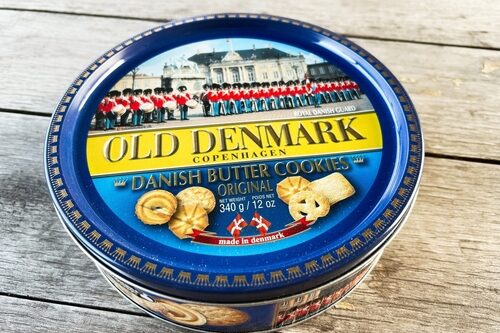
You’d open a blue Danish butter cookie tin hoping for cookies and find needles, buttons, and thread instead. It was a classic household trick, especially among thrifty families. The tin was sturdy, reusable, and too pretty to throw away. It became an accidental symbol of creativity and resourcefulness.
That tin captured the essence of homes before perfection took over—nothing wasted, everything repurposed. It wasn’t about aesthetic perfection; it was about making do and making it work. Today’s sleek storage containers lack that kind of story. The cookie tin, in its humble way, told one about love, thrift, and memory.
2. A Landline Phone with a Cord
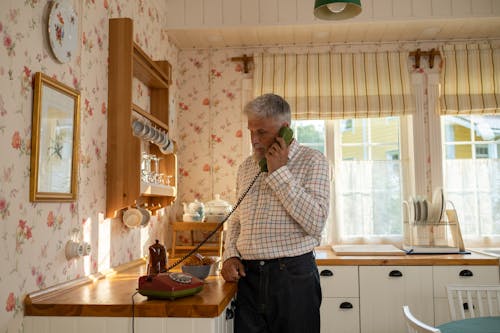
Before smartphones and Bluetooth everything, the family landline was the nerve center of the home. You couldn’t walk far because the cord only stretched so much, and if someone was on the phone, everyone else had to wait. The ringing sound—sharp, mechanical, impossible to ignore—was part of daily life. It wasn’t just a phone; it was where gossip, news, and teenage drama all happened.
Now, homes are quieter, with calls taken privately or over text. The landline forced conversation to be communal—you couldn’t scroll while you talked, and sometimes you had an audience. It also meant memorizing numbers, something few of us could do now. The cord might have tangled easily, but so did our lives back then—and that was part of the charm.
3. Family Photo Albums

Every home used to have thick, heavy albums filled with prints that smelled faintly of plastic and paper. You’d sit on the couch, flipping through birthdays, vacations, and bad haircuts frozen in time. Each photo had to be developed, meaning you committed to capturing moments carefully. Albums were shared artifacts, not just digital files you scroll past.
Today, our memories live in clouds, often unseen and unsorted. There’s something grounding about seeing photos fade a little at the edges, knowing they’ve been held and loved. Albums told family stories in a tactile way, one page at a time. We may have perfected convenience, but we’ve lost the joy of rediscovering old memories by accident.
4. A Junk Drawer
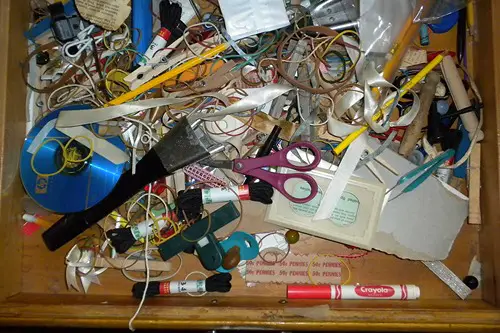
Every house had one: a catch-all space where rubber bands, spare keys, and mystery screws lived. It wasn’t pretty, but it was practical—a miniature museum of everyday life. Need a battery? Check the junk drawer. Lost a pen cap? It was probably in there too.
Minimalist design and storage hacks have tried to eliminate this chaos, but in doing so, we lost something human. The junk drawer was proof that life didn’t fit neatly into labeled boxes. It reflected real living—imperfect, spontaneous, and sometimes messy. Perfection leaves no room for the random bits that make a house feel alive.
5. Plastic Couch Covers

If you grew up before the 1990s, you probably remember sitting on a sticky, crinkly couch covered in plastic. It was a way to protect expensive furniture, especially in homes where that couch was a major investment. Guests were impressed, but comfort wasn’t the priority—preservation was. The plastic was a promise that “nice things” would last longer if you didn’t actually use them.
Today’s homes favor livability over protection, with fabrics designed for spills and wear. But those plastic covers say something about the values of the time: respect for things, frugality, and pride in keeping a home spotless. They weren’t about perfection—they were about practicality in a world where replacing wasn’t easy. You couldn’t sink into them, but they represented effort and care.
6. A Rolodex or Address Book
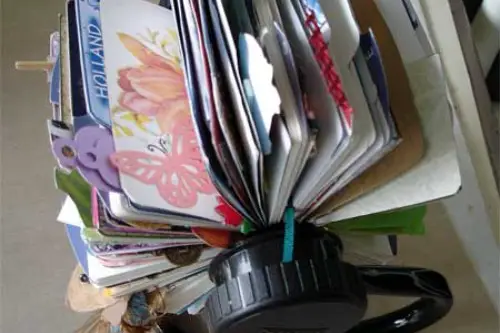
Before smartphones synced every contact automatically, people wrote down phone numbers by hand. Rolodexes spun with the names of coworkers, family members, and old friends. Address books were often tucked in kitchen drawers, worn soft from use. The handwriting inside was part of the memory—it made each entry personal.
Now, losing a phone can mean losing every number, something that never happened with paper. There was patience in flipping through cards or pages to find someone’s name. It reminded you that staying connected took a bit of work. Today’s instant access is efficient, but maybe a little too clean—like perfection erasing the human touch.
7. A Sewing Kit
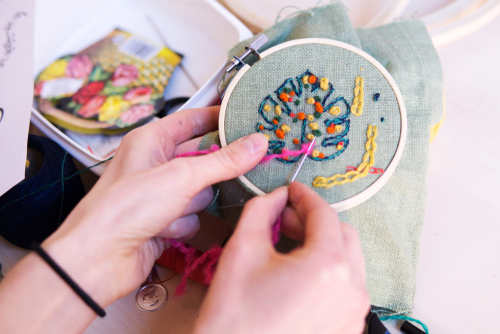
Every home used to have a small tin or basket filled with needles, buttons, and spools of thread. A loose button or torn hem didn’t mean a trip to the store—it meant ten minutes with a needle and some patience. Sewing was a household skill, not a hobby. It taught care, thrift, and a sense of independence.
Now, most of us toss or replace things instead of fixing them. The sewing kit represented a slower, more resourceful way of living. It wasn’t just about mending—it was about valuing what you already had. Perfectionism made “new” more appealing than “repaired,” and something meaningful got lost in the process.
8. Doilies on Every Surface

Remember those little lace mats that used to sit under lamps, vases, and candy dishes? Doilies were once a symbol of neatness and care—homemade or bought, they showed off the homeowner’s attention to detail. Many were crocheted by hand, passed down through generations, or gifted at weddings and baby showers. They might seem fussy now, but they were a way to make ordinary furniture feel dressed up and cared for.
Doilies disappeared when minimalist design became popular, and surfaces were meant to look clean and bare. But they also represented something deeper: time spent making things by hand and the pride in displaying them. In today’s world of fast decor, that kind of slow, personal touch is rare. Maybe perfection made us forget that homes used to wear their hearts on their tabletops.
9. Wall Calendars

Before phone reminders and smart speakers, every family had a wall calendar in the kitchen or hallway. It was where birthdays, dentist appointments, and anniversaries were scribbled in pen. Some had scenic photos or kittens, others were freebies from local businesses. The calendar was a snapshot of family life, month by month.
Now, our schedules live in devices, rarely shared or seen. The wall calendar encouraged communication—it was a central hub for everyone’s plans. It made time visible and tangible, not just another app notification. Maybe homes feel a bit more isolated now because the walls stopped talking back.
10. Ashtrays on the Coffee Table
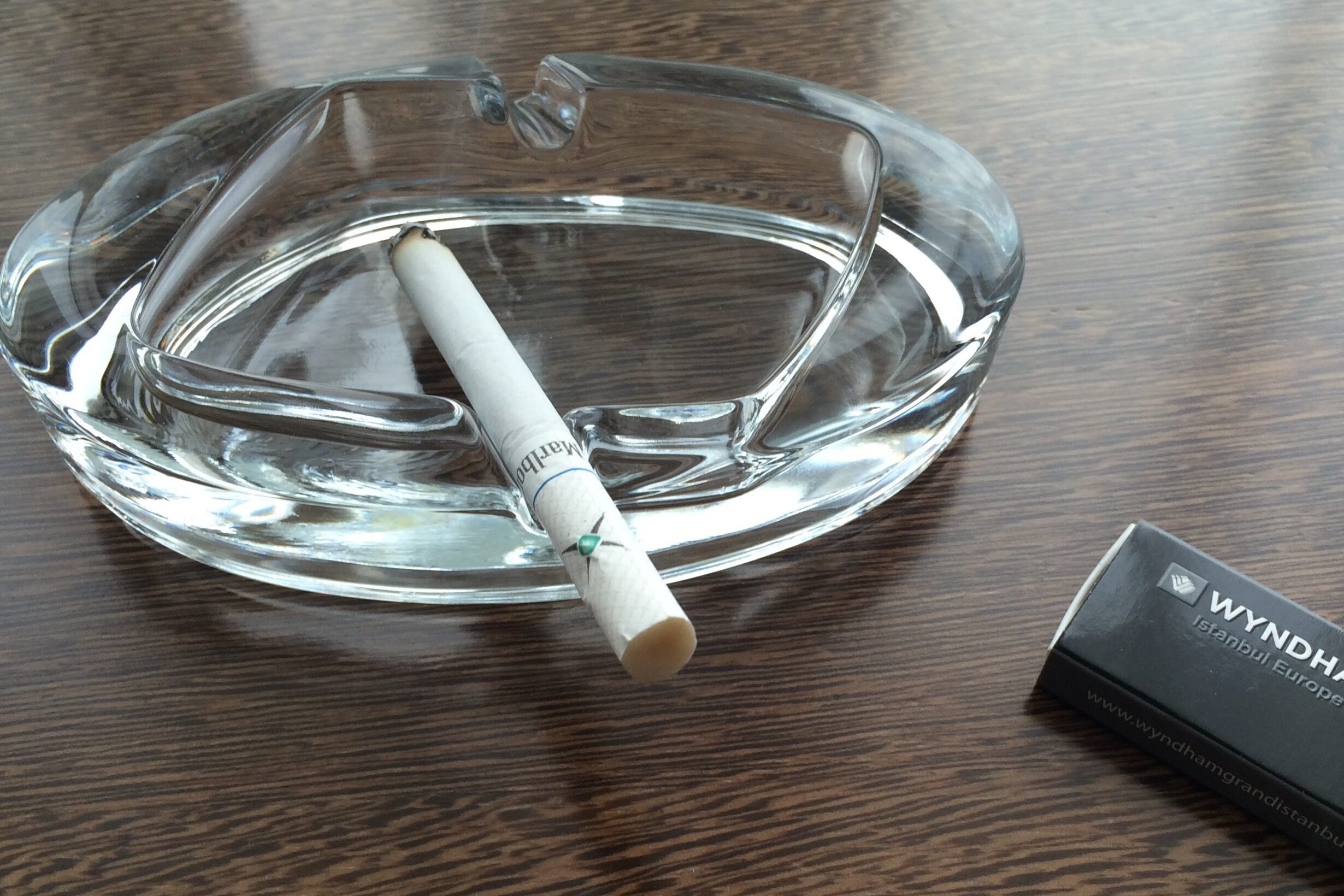
Even non-smokers often had decorative ashtrays for guests back in the day. They came in glass, ceramic, and sometimes souvenir designs from vacations. Smoking indoors was part of socializing, and having an ashtray handy was a sign of hospitality. It sounds strange now, but it was once as normal as having a coaster set.
As awareness of health risks grew, ashtrays disappeared from homes, taking with them a certain mid-century aesthetic. They were small but telling—symbols of a more relaxed, less sanitized era. Their absence reflects how perfection became synonymous with purity and control. The air may be cleaner, but the rituals around gathering have changed too.
11. Lace Curtains

Homes once framed their windows with delicate lace curtains that filtered light in soft, romantic patterns. They weren’t just decoration—they offered privacy without shutting the world out. Washing and hanging them was a small but regular ritual of care. They fluttered with open windows, a quiet sign that someone was home.
Now, heavy blinds or minimalist shades dominate, favoring clean lines over texture. Lace curtains feel old-fashioned, but they carried warmth and humanity. They let imperfection in—the light, the breeze, the view. Maybe that’s what homes today are missing: the gentle blur between inside and out.
12. A China Cabinet
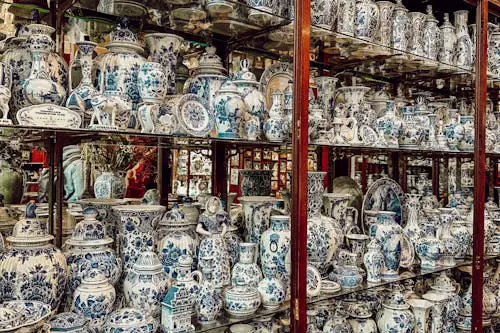
For decades, the china cabinet was a centerpiece in dining rooms. It held the “good” dishes—used only on holidays or when company came over. The glass doors showcased fine porcelain, crystal, and heirlooms that told stories of family pride. It was part furniture, part family archive.
Modern homes lean toward open shelving or none at all, trading sentiment for simplicity. The china cabinet represented saving things for special moments, a kind of reverence we’ve mostly abandoned. It wasn’t about showing off; it was about preserving beauty for the right occasion. Perfection prefers daily uniformity, but older homes knew the value of ceremony.
13. A Bread Box
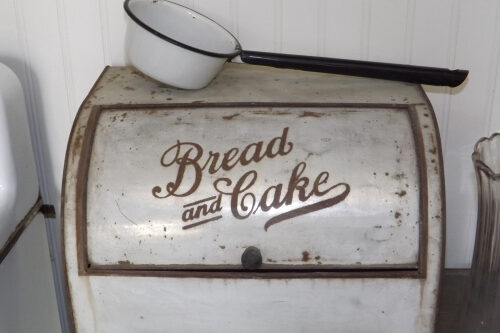
A bread box once sat on nearly every kitchen counter, keeping loaves fresh before preservatives and plastic packaging took over. It was both practical and decorative, often matching the kitchen’s color scheme. Opening it in the morning was part of the breakfast routine, the smell of real bread filling the air. It made food storage feel a little bit personal.
Today, bread boxes are rare, victims of sleek counters and store-bought convenience. But they remind us of a time when kitchens were made for actual cooking and daily rituals. There was something satisfying about a loaf wrapped in paper instead of plastic. The bread box kept that simple pleasure alive.
14. A Record or CD Collection
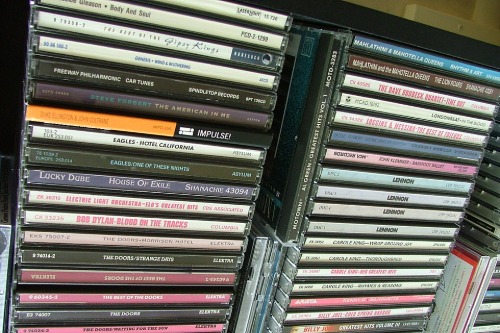
Before streaming, people built music collections one album at a time. Shelves of vinyl or CDs were a form of self-expression—your personality, stacked in jewel cases. Listening to music meant choosing it intentionally, not letting an algorithm decide. There was anticipation in dropping the needle or pressing play.
Now, we have infinite songs but less attachment to any of them. Those collections made music tangible, with covers, liner notes, and scratches that told stories. They were imperfect but intimate, reflecting personal taste over digital convenience. Maybe perfection made music too easy to access—and too easy to forget.
15. A Real Mail Basket

Every home used to have a place for mail—a wicker basket, a kitchen counter spot, or a little wall pocket. It filled with bills, birthday cards, catalogs, and handwritten letters. Sorting through it was part of the daily rhythm, often over coffee or dinner conversation. There was something grounding about the physicality of it all.
Now, our inboxes overflow instead, and even holiday cards come digitally. The mail basket was messy, yes, but it was also human—evidence of connection and community. Each envelope was a small reminder that someone thought of you. Perfection might have decluttered our homes, but it also decluttered our hearts a little.
This post 15 Things Every Home Used to Have Before Perfection Took Over was first published on Greenhouse Black.
